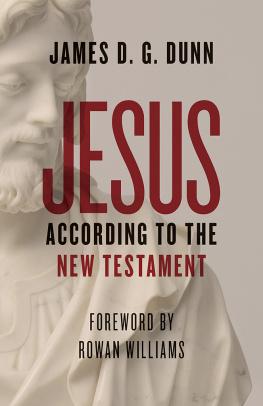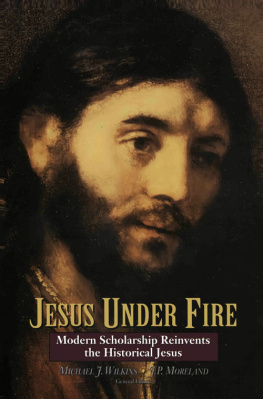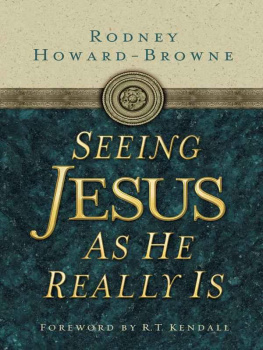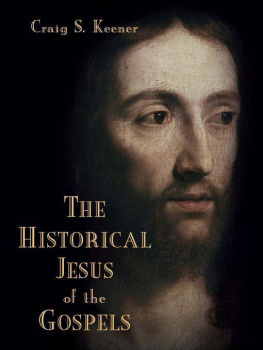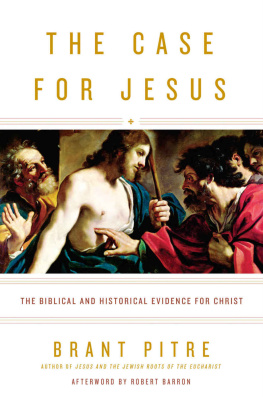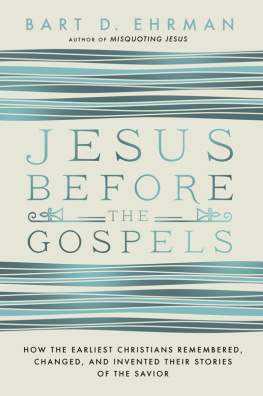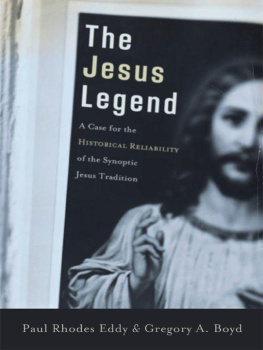What Jesus Learned from Women
James F. McGrath

what jesus learned from women
Copyright 2021 James F. McGrath. All rights reserved. Except for brief quotations in critical publications or reviews, no part of this book may be reproduced in any manner without prior written permission from the publisher. Write: Permissions, Wipf and Stock Publishers, W. th Ave., Suite , Eugene, OR 97401 .
Cascade Books
An Imprint of Wipf and Stock Publishers
W. th Ave., Suite
Eugene, OR 97401
www.wipfandstock.com
paperback isbn: 978 -1-5326-8060-1
hardcover isbn: 978-1 -5326-8061-8
ebook isbn: 978-1-5 326-8062-5
Cataloguing-in-Publication data:
Names: McGrath, James F., author.
Title: What Jesus learned from women / James F. McGrath.
Description: Eugene, OR: Cascade Books, 2021 | Includes bibliographical references and index.
Identifiers: isbn 978-1-5326-8060-1 ( paperback ) | isbn 978-1-5326-8061-8 ( hardcover ) | isbn 978-1-5326-8062 -5 ( ebook )
Subjects: LCSH: Jesus Christ. | Women in the Bible.
Classification: BT590.W6 M34 2021 ( print ) | BT590.W6 ( ebook )
For my wife Elena
Preface
O nce a book is completed, it can be difficult to trace what first prompted it to be written. I know that a number of factors influenced it, and enough people have asked me how I came to write this book that I feel I should offer some brief account. The key spark was having a student approach me about working on an honors thesis and independent research that would allow her to explore two things that she had previously felt were in tension, namely her Christian faith and her feminism. As an academic whose work focuses on the historical Jesus, I immediately began to seek ways that the student in question might do something original and valuable in that area, perhaps something that might eventually lead to one or both of us writing an article or even a book on the subject. Since so many have written about Jesus views of women and his openness to their learning from him, I began to consider the same subject in reverse, namely Jesus learning from women. The rest unfolded rather quickly as I began with the classic example (the Syrophoenician woman who changed Jesus mind) and soon noticed other instances when women appear to have taken initiative and influenced him. The reactions of his disciples and others around him made clear that what we were witnessing on the pages of the Gospels was not Jesus illustrating things he regularly taught, but Jesus doing something for the first time. The rest, as they say, is history. Or better, I will let readers and my academic peers judge whether Ive accurately reconstructed history. Either way, the rest is the book that you have begun reading.
My thanks are due to many individuals. First let me mention my wife Elena McGrath for being the woman from whom I have learned the most, as well as for reading and providing feedback on multiple drafts of the books chapters throughout the writing process. Next I wish to thank Rachel Koehler for the conversations about her honors thesis research at Butler University which first gave me the idea for this book. I am grateful to Chris Spinks, editor at Cascade, who immediately responded with enthusiasm to my idea for this book and turned it from idea into contracted project. I have immense appreciation for the participants in my Sunday school class at Crooked Creek Baptist Church (Rev. Joy and Rev. John Amick, Marcia and Rev. Don Scott, Judy Spencer, Nicole and John Arnold, Ann and Jim Hickey, the Peacock family, and others who have at times joined us) for providing many opportunities for conversations that allowed me to explore and garner feedback on the ideas in this book, as well as in some cases reading actual drafts of parts of the manuscript and providing suggestions and observations that influenced the book in concrete ways. I owe thanks to many other conversation partners and readers of drafts such as Amy-Jill Levine, Sara Parks, Soozi Whitten Ford, Talita Adam, Dana Fgdar, Rose LaVista, Lydia Bringerud, Chuck Robertson, and my Butler University colleagues Deb Saxon, Claudia Johnson, and Mindy Welch. There are many other academics with whom I had helpful conversations, even if only briefly, about the concept or specific details, including April DeConick, Elizabeth Raine, and Ben Chenoweth. I am grateful as well to countless other scholars and academic works which are included in the bibliography but are too numerous to mention individually here, who served as conversation partners through the things you have written. I also wish to thank Patheos for hosting my blog, where I explored and received feedback on the concept for the book as well as specific ideas. Access to crucial resources was also provided by Butler Universitys Irwin Library (sometimes through Interlibrary Loan and PALShare), Christian Theological Seminary Library, Indianapolis Public Library, the Scarritt-Bennett Center and Vanderbilt Divinity School libraries in Nashville, and the State Library of Victoria in Melbourne, Australia.
I want to thank Macey Dickerson for the incredible artwork she created for the cover. The way she found inspiration in what I wrote led to a depiction of the Samaritan womans encounter with Jesus that I feel captures the essence of the book perfectly, as well as being just beautiful. I wish to thank Mike Surber at Wipf and Stock for his work on the book cover. I wish to thank April DeConick and Adele Reinhartz for their endorsements. When I first saw the draft of the book cover with the artwork and endorsements, I was overwhelmed by emotion in a way that I never have been about any other book Ive written before.
Introduction
T here may be some for whom the idea that Jesus learned from women will be controversial, and the pages that follow will hopefully make a persuasive argument to convince you that it is nonetheless the case. Before turning to that narrower topic, however, we should address the many Christians for whom the issue will not be who Jesus allegedly learned from, but that he learned at all. The fact that a significant number of people feel discomfort with the idea of Jesus learning really ought to surprise and shock us. It is an axiom of the historic Christian faith that Jesus was fully humana complete human being, with a human soul (or what many today might prefer to call a human mind and personality). The classic definitions of Christian orthodoxy are quite clear about that point, as are the New Testament Gospels. The Gospel of Luke is emphatically clear about the matter, stating that Jesus grew in wisdom (Luke :). Growing in wisdom is what learning is all about, and to be blunt, that statement in Luke is purely and simply incompatible with the idea that Jesus had no need to learn, no need to be taught. There appear to be widespread misconceptions about this nevertheless. The story that Luke tells immediately before that statement, about Jesus in the temple as a young man, is sometimes depicted in movies with Jesus teaching his elders. However, what Luke actually says is that Jesus was listening to them and asking them questions (Luke :). Jesus is not depicted as something other than human, nor even as a supernaturally knowledgeable wonder child who has no need to learn. He is depicted in this story, rather, as an ideal student. It is his listening and asking questions that lead to his growth in wisdom, to his learning. Indeed, Luke mentions that he grew in both wisdom and stature. That second word can also mean maturity, in which case the entire verse would be about Jesuss cognitive and emotional growth and development. But even if Luke had in mind the process of getting taller, that kind of growth is simply part of being human. No one who accepts that Jesus was a real human being envisages him being born or appearing in the world at his full adult size, much less as a giant. Yet when it comes to his knowledge and wisdom, the same does not hold true in the imagination of many. In fact, there are extracanonical sources that depict Jesus as speaking as an infant, or as schooling his would-be instructors. But that isnt the Jesus of history, or even the still altogether human Jesus of our earliest sources. At times, the depiction in the New Testament and the conclusions of historians are at odds. On this point, however, they largely converge. We should allow them to do so and accept what they tell us: Jesus learned.



